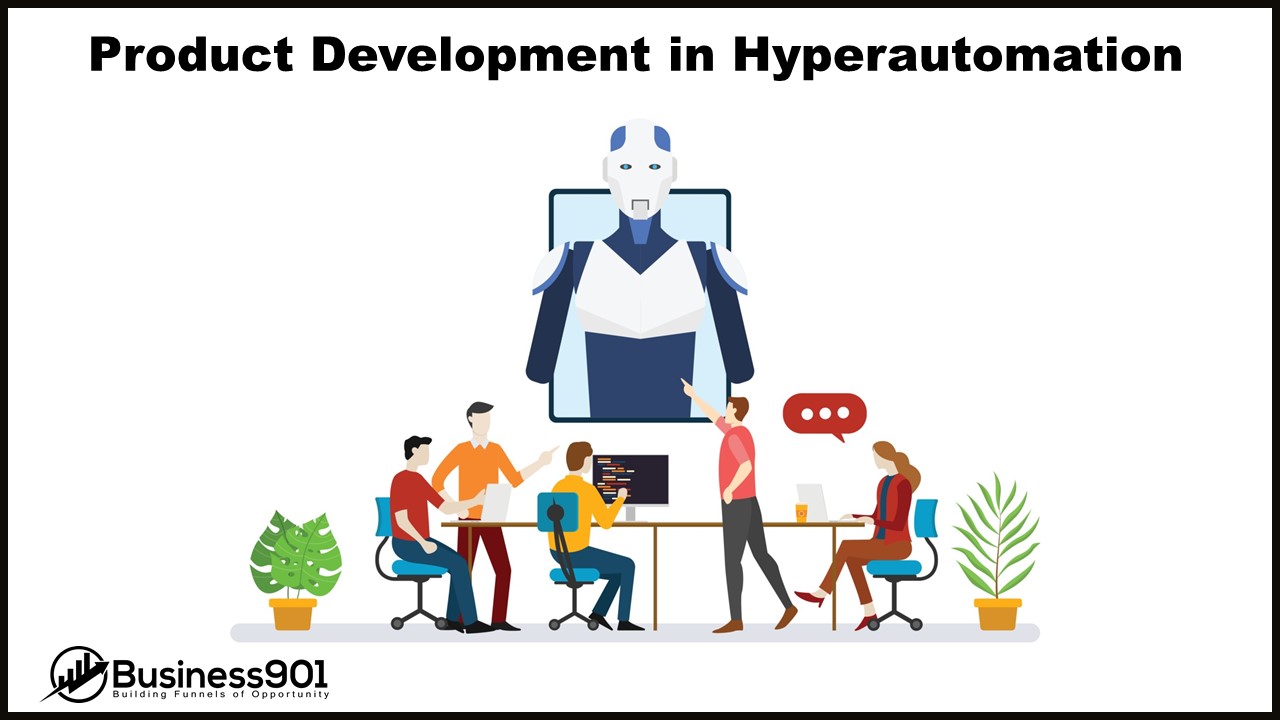Product development is essential to driving business growth and staying ahead of the competition. Organizations increasingly turn to hyperautomation to reduce costs and gain a competitive edge in today’s ever-evolving digital landscape. Hyperautomation uses artificial intelligence (AI) technologies and advanced automation tools to increase efficiency and optimize processes. By leveraging these technologies and automation tools, organizations can take advantage of the capabilities and features of their existing technology to achieve their strategic business objectives. In this blog post, we will explore the key concepts of hyperautomation and how it can be used to accelerate product development. We will also discuss the benefits and challenges of using hyperautomation in product development and its potential impact on the organization. Additionally, we will look at some of the best practices and strategies for successfully implementing hyperautomation in product development. Finally, we will provide an overview of how organizations can take advantage of the latest advancements in
Automating the development process: Automating the development process is essential for product development in hyperautomation. Automation can enable faster product design and development, decrease time-to-market, and enable more efficient operations. Automation can also reduce human error and save costs by eliminating the need for manual tasks. Additionally, automation can allow the use of advanced technologies such as AI and machine learning for product development. By automating product development, companies can ensure their products are of the highest quality and efficiently address customer needs.
Leveraging AI and ML for product innovation: In the era of hyperautomation, AI and ML have become essential for product innovation. These powerful tools can help organizations research and analyze customer data, identify trends and patterns, and develop new product ideas. AI and ML can also automate product design and testing processes, enabling organizations to quickly and efficiently create new products and services. AI and ML also allow organizations to collect data from IoT devices and use it to develop products and services tailored to their customers’ needs. Organizations leveraging AI and ML can improve their product development processes and gain a competitive edge in the market.
Identifying optimal workflows: Identifying optimal workflows is an essential part of successful product development in hyperautomation. It involves analyzing the current processes used in the organization and finding ways to streamline or improve them. This process should include examining the customer journey, analyzing customer feedback and data, and understanding the customer’s needs and preferences. Additionally, it should consist of developing a holistic workflow that integrates with existing processes, systems, and software. This will ensure that the process is efficient and effective and meets all stakeholders’ needs.
Utilizing robotic process automation: Robotic process automation (RPA) is one of the most efficient ways to scale up hyperautomation efforts. Through RPA, businesses can automate recurring tasks and processes with software robots, which are programmed to carry out specific activities with little human intervention. This allows companies to reduce costs, improve accuracy, and decrease the time needed to complete tasks. Additionally, RPA can also help businesses in meeting regulatory compliance standards. By utilizing RPA, companies can increase the efficiency of their hyperautomation and product development efforts.
Improving customer experience with hyperautomation: Hyperautomation is revolutionizing customer experience by bringing the power of automation to customer service functions. By automating mundane customer service tasks such as data entry, order processing, or customer inquiries, companies can free up their customer service representatives to focus on more complex customer requests. In addition, hyperautomation can help companies quickly respond to customer inquiries and provide better customer service by offering personalized recommendations or automated responses. Automation lets companies capture customer feedback and provide insights to product development teams to help them understand customer needs and build better products.
In conclusion, product development in hyperautomation is an important area of focus for businesses in a digital economy. It can help streamline operations, reduce costs, and increase efficiency. Hyperautomation tools can automate manual tasks, speed product development, and maintain data accuracy. Businesses need to assess their current processes and determine if hyperautomation is a good fit for them. With the right strategy and tools, businesses can leverage the power of hyperautomation to take their product development to the next level.

